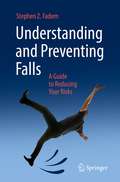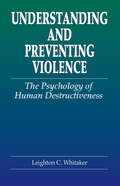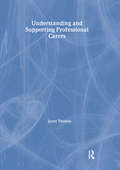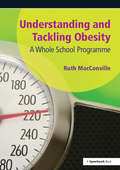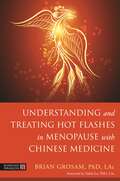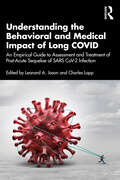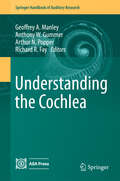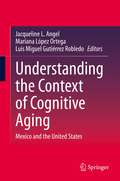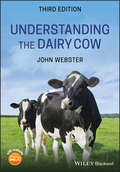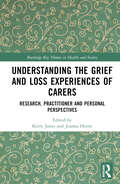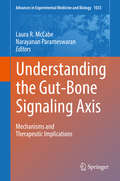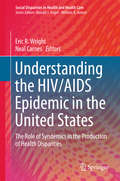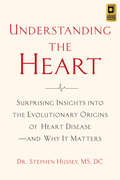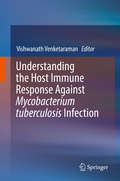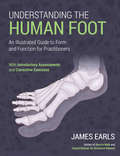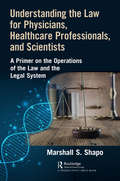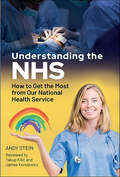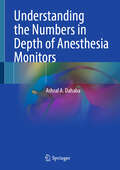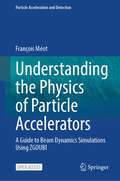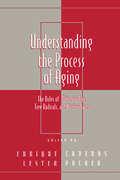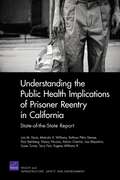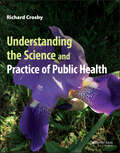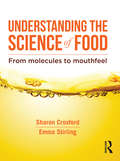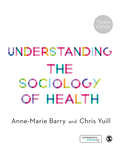- Table View
- List View
Understanding and Preventing Falls: A Guide to Reducing Your Risks
by Stephen Z. FademDespite the fact that elderly persons have a 33-35% chance of falling and becoming injured, most are ill-prepared. According to the World Health Organization, falls cause over 50% of accidental injuries and 39% of fatal injuries in the elderly. They are the fifth leading cause of death in the general population. Falls can be either non-mechanical, related to underlying illness or debilitation, or they can be mechanical, related to accidental trips and slips and caused by environmental factors such as poor lighting, surprise steps, lack of grab bars, and slippery bathroom floors. Non-mechanical falls can be related to cognitive disorders, such as stroke or dementia, or to frailty. They can also be related to over-medicating with sedatives, diabetic medications, or blood pressure therapy. Falls can be the consequence of aging or chronic diseases such as heart disease, diabetes, kidney disease, or cancer. Patients with any of these disorders may have poor muscle tone, walking disorders, or a loss of equilibrium. Mechanical falls may be completely avoided by fall-proofing the home environment. This book outlines several practical tips for eliminating potential home hazards and reviews each of the major causes of falls to help the patient and his or her caregiver, as well as the health provider, prevent falling by adapting one's lifestyle. The book also covers exercise programs and community programs that can be established and used to minimize the risk of falling in the elderly. Given that falls are common and that the majority of persons who fall are ill-prepared, this book will raise awareness of fall-prevention measures that can help reduce falls and fall-related injuries.
Understanding and Preventing Violence: The Psychology of Human Destructiveness (Pacific Institute Series on Forensic Psychology)
by Leighton C. WhitakerMore violence has been perpetrated in the 20th century than in the two previous centuries combined. Understanding and Preventing Violence: Unmasking the Mentality of Human Destructiveness elucidates the mentality of destructive behavior with the hopes that in the future, the trend may be reversed through enlightenment. But in order to choose to be
Understanding and Supporting Professional Carers
by Janet ThomasThe National Service Framework for mental health aims to provide uniformly good systems so that mental health problems are detected and therefore treated early. This book sets out how learning more about mental health and reviewing current practice can be incorporated into a personal development plan or practice learning plan. It shows how to integrate quality improvements into everyday work and bridges the gap between theory and practice. Doctors nurses and practice managers can build up a personal development plan or a practice professional development plan through completing the exercises at the end of each chapter and it demonstrates how to include clinical governance in the mental healthcare services they offer.
Understanding and Tackling Obesity: A Whole-School Guide
by Ruth MacConvilleFrom an early age children are bombarded by the media with messages promoting foods high in saturated fats, sugars and salt. One of the greatest changes for children in the last 50 years is the decrease in exercise and the increase in 'screen' time. This programme is not about dieting or weight control, instead it has been designed to be realistic and non-discriminatory, aiming to enable children from an early age to recognise and resist unhealthy pressures, maintain body-esteem and know how to make skilled choices that will ensure their health and wellbeing. 'When we shift the focus from fat and weight to healthy choices leading to nutritional health and fitness we sacrifice nothing and gain an approach that enhances the wellbeing of all.' (Kater, 2005). The 12 sessions cover topics including: what to eat; how to understand food labels; media messages; get moving; and TV turnoff. There are full facilitator notes with all the necessary resources to run an interactive programme that will engage children. Supporting the class activities there are 'take home' activities that will keep parents aware of what is being covered in the programme as well as a weekly log, where children record trying new foods and physical activities. The book contains background information about the increase in obesity, the effect of media messages as well as the philosophy and approach taken in the programme. The package includes a CD-ROM which has all the copiable resources and a PowerPoint for staff training.
Understanding and Treating Hot Flashes in Menopause with Chinese Medicine
by Dr. Brian GrosamUnderstanding and Treating Hot Flashes in Menopause with Chinese Medicine is the first book in history to be written on the subject. This book combines Chinese medicine concepts with current Western medicine frameworks of science and understanding of patho-mechanisms for a contemporary treatment approach to hot flashes in menopause.Dr Grosam explores both Western biomedicine - including the roles of estrogen and neurotransmitters - and Chinese medicine historical theory to provide an up-to-date understanding of hot flashes and menopausal transition. Exploring current treatments in Western medicine as well as acupuncture and herbs, he presents a complete evaluation of how modern treatment strategies can be improved through an integrated approach.Allowing for a deeper understanding of the causes of hot flashes in menopause, this book opens doors to fresh approaches and treatment strategies for women's healthcare practitioners from both branches of medicine.
Understanding and Working with Substance Misusers
by Aaron PycroftUnderstanding and Working with Substance Misusers explores the complex nature of addiction and the challenges involved in responding effectively through policy and practice. It examines the biopyschosocial elements of addiction to substances (including alcohol) and, draws together key research findings from these fields to present a new framework for integrating theory and practice. The book argues that the best way to understand addictions is as examples of "complex self organising systems", which comprise many interacting component parts. In so doing, it addresses the problem of service users presenting with multiple needs (including poly drug use, mental health problems, criminal behaviour, unemployment and relationship difficulties) and the challenges that this poses for policy makers, services commissioners and practitioners alike. This book fills the need for a text which makes the complex issues surrounding substance misuse accessible to both students and practitioners. As such, it fosters a multidisciplinary and critically reflective approach to policy and practice.
Understanding the Behavioral and Medical Impact of Long COVID: An Empirical Guide to Assessment and Treatment of Post-Acute Sequelae of SARS CoV-2 Infection
by Leonard A. Jason and Charles LappUnderstanding the Behavioral and Medical Impact of Long COVID serves to expand the research around the illness in order to enable health care researchers and practitioners to address the questions that are imperative to individuals suffering from this condition. Through its multi-faceted approach, the book puts forth a maturation of research and interventions that are theoretically sound, empirically valid, innovative, and creative in the Long COVID area. As a scholarly and scientific compilation of Long COVID symptoms and related disorders, this book offers unparalleled insight into the critical developments across medical areas treating this illness. It helps to fill the space that the pandemic had created for knowledge of the condition, and contributes to the emerging emphasis on translational research blending the social sciences and biological fields. By putting forth the most optimal medical care practices in the treatment of complex Long COVID symptoms, this practical anthology will serve as a guide for practicing clinicians in assessment as well as treatment. It will also benefit researchers aiming to gain more understanding of Long COVID through its discussion around the critical developments in other medical areas treating the condition, and paves the way for the collaboration and future research needed to best support the global effort to mitigate the effects of this illness. This book will be essential reading for academics, practitioners, and researchers. It will appeal to individuals engaging with the fields of medicine, public policy, psychology, and for researchers looking to gain clarity about our current understanding of Long COVID. It will further be of interest to public/government agencies, nonprofit organizations, and the general public wanting to gain more information about these ambiguous and evasive symptoms.
Understanding the Cochlea
by Arthur N. Popper Richard R. Fay Geoffrey A. Manley Anthony W. GummerThis SHAR volume serves to expand, supplement, and update the original "Cochlea" volume in the series. The book aims to highlight the power of diverse modern approaches in cochlear research by focusing on advances in those fields over the last two decades. It also provides insights into where cochlear research is going, including new hearing prostheses for the deaf that will most likely soon enter the phase of clinical trials. The book will appeal to a broad, interdisciplinary readership, including neuroscientists and clinicians in addition to the more specific auditory community.
Understanding the Context of Cognitive Aging: Mexico and the United States
by Jacqueline L. Angel Luis Miguel Gutiérrez Robledo Mariana López OrtegaThis book provides a bi-national portrait of dementia in the rapidly aging Mexican-origin population in Mexico and the United States. It provides a comprehensive overview of critical conceptual and methodological issues in the study of cognitive aging and related mental and physical conditions. The book examines the sources of vulnerability and their consequences for Mexican-origin and for “aging in place”. By providing a combination of new knowledge, empirical evidence, and fresh approaches of dementia support in later life, this book will contribute to moving the field of Mexican-origin aging and health forward. By focusing on the serious challenges in old-age support for older people with dementia and neurocognitive disorders in two different contexts, this book will deepen academics, researchers, students and young investigators understanding of what is necessary to achieve optional care.
Understanding the Dairy Cow
by John WebsterA comprehensive and thoroughly revised text on dairy science that contains information on the most recent developments The fully updated third edition of Understanding the Dairy Cow explores the scientific principles that provide a foundation for understanding the animal’s body system. The comprehensive text also reveals how to properly manage dairy cattle with economic efficiency whilst taking into consideration the cow’s welfare. The revised new edition contains expanded coverage on topics including insight into cow behaviour and welfare, genetic selection indices, new strategies for control of mastitis and lameness and information on the overworked cow. It also contains the most recent developments in breeding, nutrition and management. Is an authoritative text on the dairy cow that covers a wide-ranging subject area including the science, disease and husbandry Presents the information and knowledge necessary for the efficient and humane management of cows Includes expanded coverage on a variety of topics such as cow behaviour and welfare, and genetic selection indices Highlights major new developments in the field Covering both the basics and recent developments in dairy science, Understanding the Dairy Cow 3rd Edition is ideal for students in agriculture and veterinary science and for professionals working in the complex business of dairy farming.
Understanding the Grief and Loss Experiences of Carers: Research, Practitioner and Personal Perspectives (Routledge Key Themes in Health and Society)
by Kerry Jones Joanna HorneThis book draws on recent research and cutting-edge ideas about bereavement and carers’ experiences across the life course to explore carers’ experience of loss and discuss their specific needs prior and or following the death of those they care for.Whether care provided is related to a long term or life limiting condition, many carers experience a multitude of losses including indefinite loss characterised by the loss of a taken-for-granted future, and an inability to plan for the future. Carers may also experience anticipatory grief as multiple losses such as companionship, personal freedom, and control manifest. While many carers are dedicated and committed to their role, they are subject to burnout and disenfranchised grief. When the role of caregiver ends as a result of the death of those cared for, this can represent a major change and a period of significant adjustment for carers leading to a range of emotions experienced.This book presents and discusses research findings, practitioner perspectives, and a wealth of personal accounts to illuminate this vital but neglected area and extend our understanding of loss for carers across the life course. This interdisciplinary and interprofessional volume brings together authors from a wide range of backgrounds, including carers themselves. It is an important contribution to the burgeoning literature around the role and experiences of carers and will interest academics, students and practitioners in health and social care, counselling, and psychology with an interest in loss and bereavement.
Understanding the Gut-Bone Signaling Axis
by Laura R. McCabe Narayanan ParameswaranThis is the first book compiling current research on the gut-bone signaling axis and its implications in the pathophysiology of GI and bone diseases. Rather than focusing on a single mechanism, this book provides the reader with a broad view on gut-bone signaling and the most up-to-date information in this rapidly growing area. The volume is also unique in that it looks at what is known about GI diseases affecting bone and then examines the role of the microbiome and its modulation by pre and probiotics to treat bone disease, placing this topic within the context of gut-bone signaling pathways. Understanding the Gut-Bone Signaling Axis will thus provide an understanding of how various therapies could be applied to this area.
Understanding the HIV/AIDS Epidemic in the United States
by Eric R. Wright Neal CarnesThis book examines the HIV/AIDS epidemic in the United States using the concept of syndemics to contextualize the risk of both well-known, and a few lesser-known, subpopulations that experience disproportionately high rates of HIV and/or AIDS within the United States. Since discovery, HIV/AIDS has exposed a number of social, psychological, and biological aspects of disease transmission. The concept of "syndemics," or "synergistically interacting epidemics" has emerged as a powerful framework for understanding both the epidemiological patterns and the myriad of problems associated with HIV/AIDS around the world and within the United States. The book considers the disparities in HIV/AIDS in relation to social aspects, risk behavior and critical illness comorbidities. It updates and enhances our understanding of the HIV/AIDS epidemic in the United States and contributes to the expanding literature on the role of syndemics in shaping the public's health.
Understanding the Heart: Surprising Insights into the Evolutionary Origins of Heart Disease—and Why It Matters
by Doctor Stephen Hussey“The most mind-blowing information on heart disease. . . . I consider this to be one of the best books I’ve ever read on cardiovascular health.”—Ben Greenfield, New York Times bestselling author Heart disease is the number-one killer in the world. Despite ever-advancing medical procedures and more and more powerful pharmaceutical drugs, the rate of heart disease continues to rise. According to Dr. Stephen Hussey, this is due in part to misunderstandings about how the heart really functions and how to keep it healthy. These misunderstandings result in improper medical approaches and off-target intervention therapies. As a type 1 diabetic, Dr. Hussey has always known that he was at two to four times greater risk of developing heart disease. As a result, he has dedicated his entire adult life to understanding the heart, to prevent himself from becoming a statistic. And then his worst nightmare came true. Dr. Hussey suffered a “STEMI,” a blockage in the left anterior descending artery of his heart. STEMIs are typically so fatal that they are known as “widowmakers.” Only 12 percent of those who experience them outside of a hospital setting survive. Dr. Hussey was among the lucky 12 percent, but faced a difficult decision during his recovery: follow the standard of care laid out for him by the attending cardiologist, or politely decline and apply everything he’d learned about the heart to a recovery protocol that would look massively different than what the doctors were recommending. In Understanding the Heart, Dr. Hussey shares the information that guided him through the highest-stakes decision of his life, including: A large body of research suggesting that the heart is not the main mover of blood in the body, and what that means for your overall health The evolutionary origins of the nervous system, and how these manifest today in rampant rates of heart disease Deep analysis of the widely accepted idea that saturated fat and cholesterol will clog your arteries The importance of reducing oxidative stress for a heart healthy lifestyle In Understanding the Heart, Dr. Stephen Hussey lays bare everything he has learned in his deep investigation into the heart, and guides you on a path to prevent disease in the context of a highly diseased modern world in order to enjoy lifelong good health.
Understanding the Host Immune Response Against Mycobacterium tuberculosis Infection
by Vishwanath VenketaramanAccording to the World Health Organization, approximately one third of the world’s population is latently infected with Mycobacterium tuberculosis (M. tb [LTBI]), of whom about 9 million have active tuberculosis (TB). It is estimated that approximately 2 million individuals die each year from active TB. An estimated 14.4% of these individuals have HIV and M. tb co-infection. TB has long been known to be one of the leading causes of death in HIV-infected individuals. Recent evidence now indicates that individuals with type 2 diabetes, the elderly, and chronic smokers are also increasingly susceptible to TB infection, the ability of their immune system to fight off active TB infection having been compromised by their condition. This book therefore aims to provide a detailed review of recent advances in the research that involves characterizing the host’s immune responses against TB infection in conditions such as HIV, diabetes, chronic cigarette smoking and aging, and strategies to restore favorable immune responses against this deadly pathogen.
Understanding the Human Foot: An Illustrated Guide to Form and Function for Practitioners
by James EarlsAn essential resource for bodyworkers, physical therapists, and sports medicine practitioners--a vital guide to understanding the anatomy, form, and mechanics of the human foot.Understanding the Human Foot is a full-color, up-to-date overview of the structure and function of the foot, written for physical therapists and movement practitioners looking to deepen their understanding of holistic anatomy. Readers will gain perspective on the impacts of foot shape; the interdependence of form and function; and the cellular processes that determine how our tissue is designed. Most importantly, author James Earls demonstrates how the foot relates to and interacts with the rest of the body during movement, laying the groundwork for a comprehensive holistic approach to assessing, troubleshooting, and addressing functional and structural foot issues.Starting with big-picture questions--what is a foot, and what is it used for? How does it work, both on its own and as part of a whole?--before zeroing in on the 26 bones, 33 joints, and many muscles that make up the foot, Earls teaches anatomy the way he wishes he'd been taught 30 years ago: with a holistic emphasis on interrelated systems, real-life applications, and approachable, easy-to-understand language. He shares: • Full-color illustrations for easy reference and comprehensive understanding • An overview of the bones, ligaments, and extrinsic and intrinsic muscles of the foot • How your gait impacts the rest of the body--and can cause problems as high up as the neck and shoulders • How to assess structural problems of the foot • Corrective exercises • A footwear guide to choosing the best shoe for your foot type
Understanding the Law for Physicians, Healthcare Professionals, and Scientists: A Primer on the Operations of the Law and the Legal System
by Marshall S. ShapoMany workers in medicine, healthcare administration, science, and technology, no matter how strong their academic degrees or how distinguished their careers, find themselves baffled, frustrated, and even angered by their encounters with the law. Some of those occasions may lead to the need for a lawyer. But many of the bafflements and frustrations arise from ignorance about what the law is, including how it operates. Over more than a half century of inquiry into the relations between law and science, and through numerous conversations with physicians, scientists, and healthcare professionals whose work rests on technological development, the author realized that they often desire more knowledge about the operations of the law and the legal system. This book seeks to provide basic knowledge about the law in realms where these professionals often encounter it, primarily in areas where activities pose risks of personal injury. This book discusses two basic types of law: civil litigation and other remedies afforded to persons who ascribe injuries to the conduct or product of others, and direct regulation by the government of the levels of safety in those areas. Principal practical applications of this knowledge lie in ways to minimize risk, both in the primary sense and in efforts to avoid litigation over injuries, and in how to present arguments about policy to government officials who write laws and regulations.
Understanding the NHS: How to Get the Most from Our National Health Service
by Andy SteinThe NHS is more than a good idea. It is beautiful. And it is you. The importance of the NHS – and the public’s affection for it – cannot be overstated, as seen through the COVID-19 pandemic. The author and his family of medics have lived and breathed the NHS, from before 1948, its birth and its history to date. But this book is for people who do not come from this medical background and do not have this life experience. Thus there are three target audiences. Firstly, it can contribute to A level study of the NHS, and career advice for 6th form students who are applying to university for a degree in healthcare. Secondly, it will educate health and social care professionals in training and in their early years. So they can start with the knowledge that the author had when he went to university in 1979. Thirdly, the book is for everyone else, who want to know how it all fits together, and in this way, improve their healthcare, and that of their family.
Understanding the Numbers in Depth of Anesthesia Monitors
by Ashraf A. DahabaIs there a unified definition of anesthesia? What exactly are we monitoring? Processed electroencephalography (pEEG) monitors may not reliably assess all anesthetic endpoints. This book explains how anesthesiologists should not blindly follow the displayed numbers when they adjust their anesthetic agents&’ doses. This book is based on the author's 30 years of experience researching the topic of Depth of Anesthesia (DOA) monitoring. Depth of Anesthesia monitors are pEEG Monitors. All conditions that would alter the EEG (these are many) would also alter the DOA displayed numbers so each reader should learn how to correctly interpret the displayed numbers. In many instances physicians are confronted with various paradoxical Depth of Anesthesia monitors displaying inaccurate readings that do not concur with &“clinically judged Anesthetic state&” whether arising from an underlying pathophysiology alteration of the patients&’ own EEG cerebral function or those due to shortcomings in the performance and design of the DoA. This book – very easy to read although the topic sounds very complicated – would like to represent a reference where anesthesiologists can go back to when they are confronted with such situations. Each chapter is focused on one contributing element that could influence depth of anesthesia monitoring. It reports cases or studies of displayed numbers that do not concur with clinically assessed depth of anesthesia; these are immediately followed by the documented scientific EEG explanations. A book that both younger and older anesthetists should read to better understand how to use DOA monitors in their daily practice and that very much simplifies the topic.
Understanding the Physics of Particle Accelerators: A Guide to Beam Dynamics Simulations Using ZGOUBI (Particle Acceleration and Detection)
by François MéotThis open access book introduces readers to the physics of particle accelerators, by means of beam dynamics simulations and exercises using the computer code ZGOUBI. The respective chapters are organized chronologically and trace the historical development of accelerators from electrostatic columns to storage rings, to the numerous variations on resonant acceleration and focusing techniques, while also addressing side aspects such as synchrotron radiation and spin dynamics. The book offers computer simulations in which readers can manipulate, guide, and accelerate charged particles and particle beams in most types of particle accelerator. By performing these simulation exercises, they will acquire a deeper understanding of charged particle beam optics, accelerator physics and technology, as well as the why and how of when to use one technology or the other. These exercises guide readers through a virtual world of accelerator and beam simulations, and involve e.g. manipulating beams for cancer therapy, producing synchrotron radiation for condensed matter research, accelerating polarized ion beams for nuclear physics research, etc. In addition to acquiring an enhanced grasp of physics, readers will discover the basic theoretical and practical aspects of particle accelerators’ main components: guiding and focusing magnets, radio-wave accelerating cavities, wigglers, etc.
Understanding the Process of Aging: The Roles of Mitochondria: Free Radicals, and Antioxidants
by Lester Packer Earique CaderasThis innovative reference explores a wide selection of topics associated with aging, providing a solid understanding of the significance and molecular basis of the aging process and charting the course of future research in the area. Stresses the interplay of mitochondria, mitochondrial DNA, oxidants, and antioxidants! Featuring the researc
Understanding the Public Health Implications of Prisoner Reentry in California
by Lois M. Davis Kathryn Pitkin Derose Paul Steinberg Malcolm V. Williams Nancy NicosiaExamines the health care needs of newly released California prisoners; the communities most affected by reentry and the health care safety net of those communities; the critical roles that health care providers, other social services, and family members play in successful reentry; and the effects of reentry on the children and families of incarcerated individuals. Recommends how to improve access for this population in the current fiscal environment.
Understanding the Science and Practice of Public Health
by Richard CrosbyA civically minded approach to public health, perfect for students on any career path Understanding the Science and Practice of Public Health is an exciting new textbook designed specifically for introductory public health courses at the college level. In a world rapidly being challenged by climate change, starvation, water shortages, and epidemics—and in a nation plagued by obesity, diabetes, early onset cardiovascular disease, cancer, and gun violence—this book provides students with crucial information that they’ll need to understand what’s going on around them. Thematically, this book focuses on the viewpoint that “We the People” have the ultimate responsibility to collectively assure the conditions that allow people to successfully seek health and well-being. Public health is a public responsibility (a maxim often repeated in the book), and college and university students must be fully informed to optimally meet this vital civic obligation. Written to be accessible to students in any major, this unique text prepares students to participate in the daily actions needed (including advocacy and support of health-related regulations and policy) to become participants in public health practice, rather than passive recipients. Readers will: Get an accessible introduction to the most pressing public health issues of today Learn how public health is promoted in society using real-world examples Become knowledgeable about public health so you can make informed decisions at the voting booth and in daily life Discover the practice of public health as it applies to pandemics, substance abuse, climate change, gun violence, and moreThe science and practice of public health depends on a well-informed and highly engaged population of civic-minded adults. This book will enable students’ enthusiastic participation in savings lives and promoting health—no matter what career path they decide to pursue.
Understanding the Science of Food: From molecules to mouthfeel
by Emma Stirling Sharon CroxfordBeing able to understand the principles of food science is vital for the study of food, nutrition and the culinary arts. In this innovative text, the authors explain in straightforward and accessible terms the theory and application of chemistry to these fields.The key processes in food preparation and the chemistry behind them are described in detail, including denaturation and coagulation of proteins, gelatinisation, gelation and retrogradation of starches, thickening and gelling, browning reactions, emulsification, foams and spherification, chemical, mechanical and biological leaveners and fermentation and preservation. The text also describes the science of key cooking techniques, the science of the senses and the experience of food, food regulations and the future of healthy food. The origins of food are explored through a focus on the primary production of key staples and their journey to the table. Tips and advice from leading chefs as well as insights into emerging food science and cutting-edge nutrition research from around the world are included throughout, and reveal both the practical application of food chemistry and the importance of this field. Featuring explanatory diagrams and illustrations throughout, Understanding the Science of Food is destined to become an essential reference for both students and professionals.'An innovative and informative text that will address the need for a food science text suitable for nutrition and dietetics students in Australia.' - Katherine Hanna, Faculty of Health, Queensland University of Technology.'A unique and timely text that will be welcomed by students, instructors, and scientists in multiple disciplines. I am thrilled to see such a modern take on the subject, blending the fundamentals of food science and chemistry with the insights and experience of practitioners from the culinary arts.' - Patrick Spicer, lecturer and researcher in food science
Understanding the Sociology of Health: An Introduction
by Chris Yuill Anne-Marie BarryUnderstanding the Sociology of Health continues to offer an easy to read introduction to sociological theories essential to understanding the current health climate. Up-to-date with key policy and research, and including case studies and exercises to critically engage the reader, this book shows how sociology can answer complex questions about health and illness, such as why health inequalities exist. To better help with your studies this book contains: · a global perspective with international examples; · a new chapter on health technologies; · online access to videos of the author discussing key topics as well as recommended further readings; · a glossary, chapter summaries and reflective questions to help you engage with the subject. Though aimed primarily at students on health and social care courses and professions allied to medicine, this textbook provides valuable insights for anyone interested in the social aspects of health.
